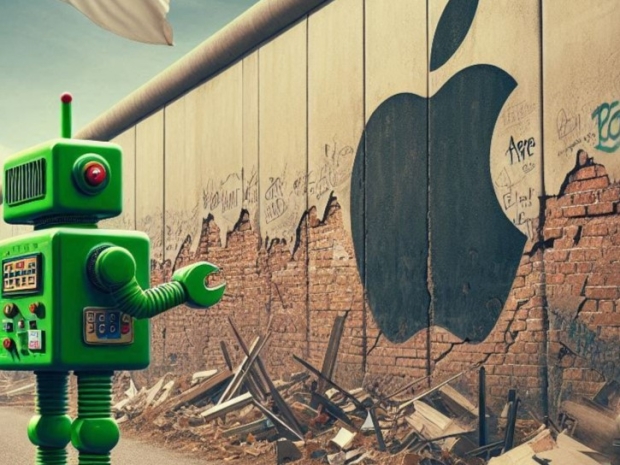A research paper has revealed how Apple trained its latest AI models using Google's neural-network accelerators instead of the more popular Nvidia hardware.
The paper, titled "Apple Intelligence Foundation Language Models," gives an in-depth look at how Apple develops its language models, from usage training.
These language models are neural networks that turn questions and prompts into text and images, powering features in Apple's operating systems like text summarisation and suggested wording for messages.
While most AI organisations prefer Nvidia GPUs, Apple chose Google's Tensor Processing Units (TPUs) for training its machine learning systems.
Apple and Nvidia have been living in a partnership of convenience for years, with neither liking the other much. It seems Apple isn't interested in mending it just to train its AI models.
Jobs’ Mob didn't use AMD's Radeon GPUs, which have been used in Mac devices before and Google's TPU v4 and TPU v5 processors are a little on the obscure side.
Apple has been cheerfully criticising Google over user privacy in its recent wave of advertising while being comfortable using its hardware.
Apple's server-side AI model was trained on 8,192 TPU v4 chips, while the on-device model used 2,048 TPU v5 processors. For comparison, Nvidia claims training a GPT-4-class AI model needs about 8,000 H100 GPUs, suggesting Apple's experience shows TPU v4 is roughly equivalent in terms of number of accelerators needed.
Apple insists its models outperform those from Meta, OpenAI, Anthropic, and even Google. The paper doesn't detail the server-side model's specs but highlights that the on-device model has nearly three billion parameters and is optimised for efficiency.
Part of the reason for this is that Apple does not believe in standard benchmarks and prefers the unbiased evaluation of Apple fanboys. They had real people compare responses from different models and choose the better one, though the specific prompts and responses weren't shared.
Apple says its models are "often preferred over competitor models" by human evaluators, but they generally ranked second or third. The on-device model performed well against smaller models but couldn't beat LLaMa 3 8B. The server-side model struggled against GPT-4 and LLaMa 3 70B.
Apple justifies its approach by showing the on-device model excelled in text summarisation, despite being the smallest model tested. However, it's unclear why similar data for other tools wasn't provided.

